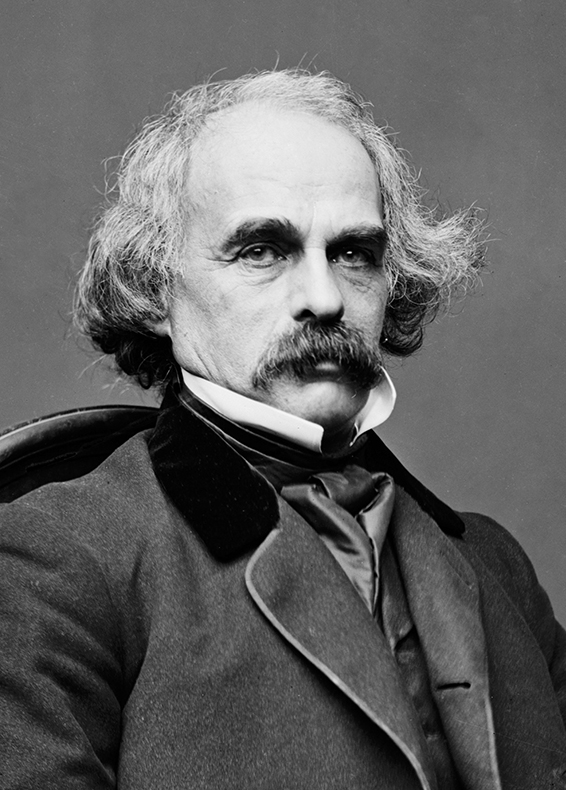Nathaniel Hawthorne (1804 - 1864)
⋮ Audio version below

Nathaniel Hawthorne was born in Salem, Massachusetts and is now recognized as one of the most important authors of the 19th Century. Hawthorne’s family was impoverished after the death of his father at sea, but he later entered Bowdoin College with the financial help of his uncle. In 1842, he married Sophia Peabody, a talented painter and author in her own right. Together they joined the ranks of the New England Transcendentalists, a group of like-minded individuals including the Emerson, Thoreau, and Alcott families, although Hawthorne’s philosophy often differed from his contemporaries. The work of these authors and activists revolutionized American fiction and social thought. Hawthorne worked at various political posts and was also a member of the Brook Farm utopian community, an experience he satirized in one of his novels The Blithedale Romance (1852). He died in his sleep in 1864.
Hawthorne’s work is deeply haunted by his Puritan past. His great great grandfather was one of the judges during the Salem Witch Trials and Hawthorne grappled with a sense of ancestral guilt throughout his life, an emotion he felt important to explore in his work. His fiction also pioneered American Romanticism, a literary era generally marked by a focus on originality, individuality, a connection with nature, dense, descriptive language, and occasionally gothic themes. Readers of this anthology are likely familiar with Hawthorne’s most famous novel, The Scarlet Letter (1850). In the preface to this novel, Hawthorne famously defines the tone of a romance as the feeling of moonlight in a familiar room. This eerie ability to make the familiar seem odd and strange is a reoccurring theme in his work, including the stories collected here.